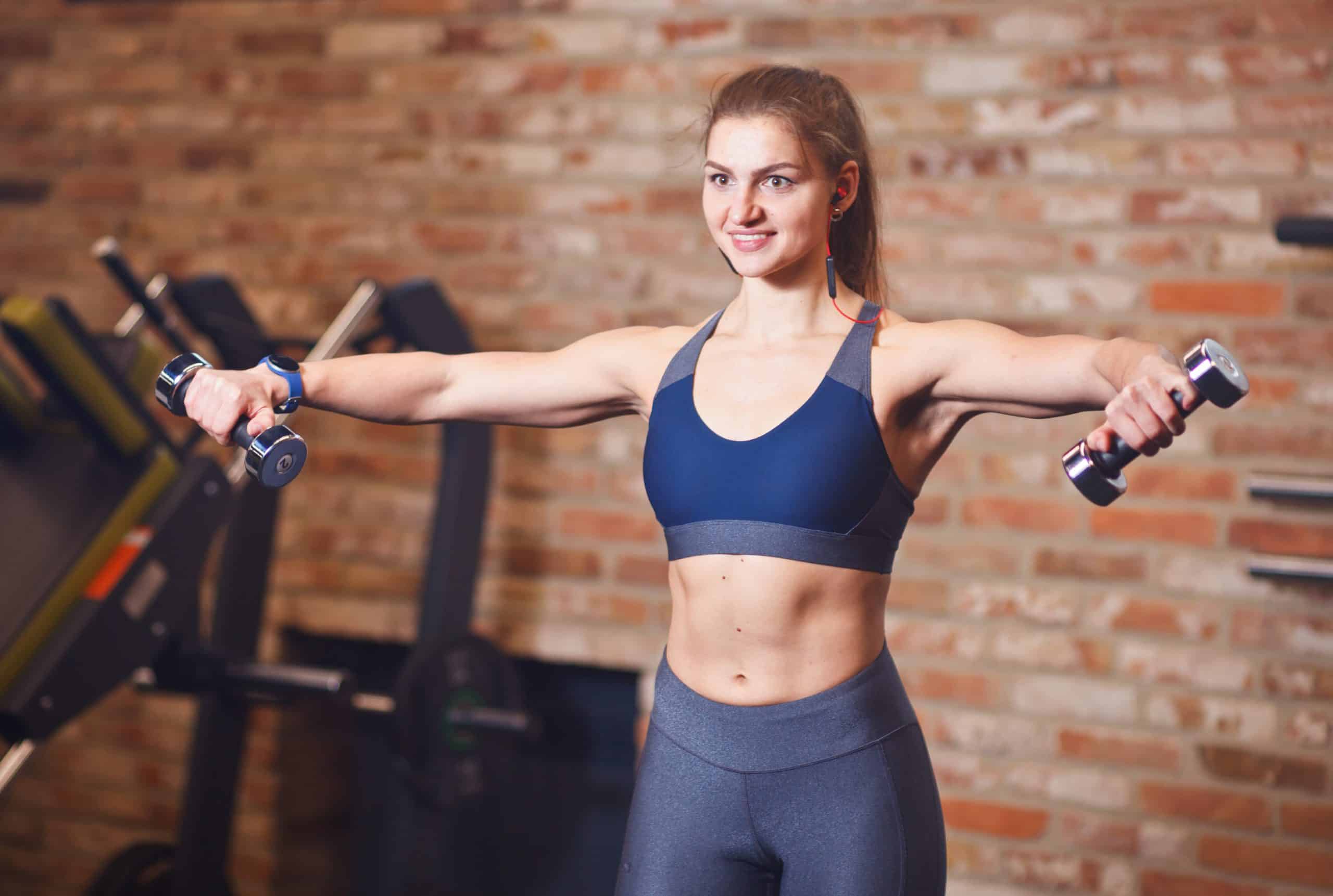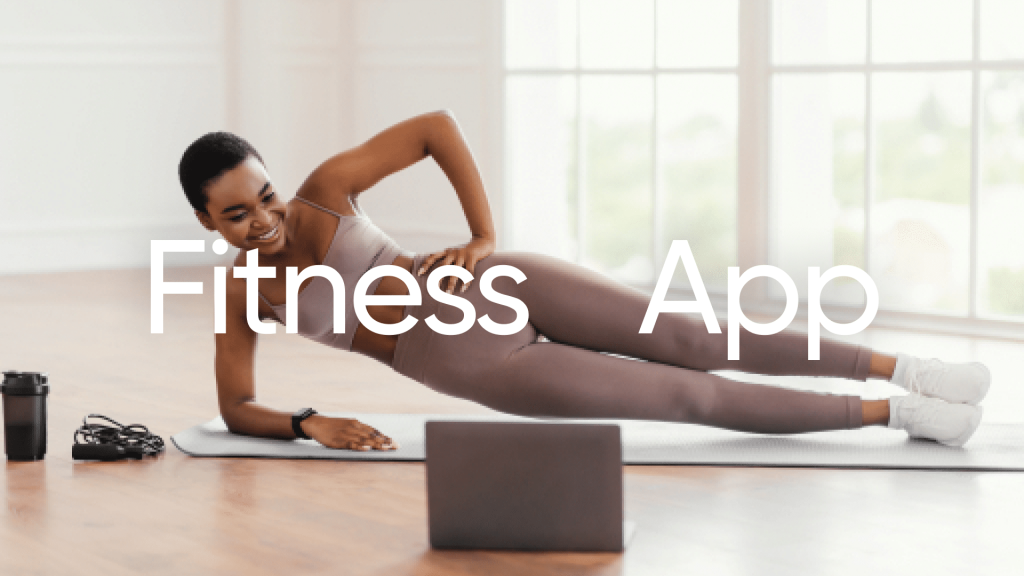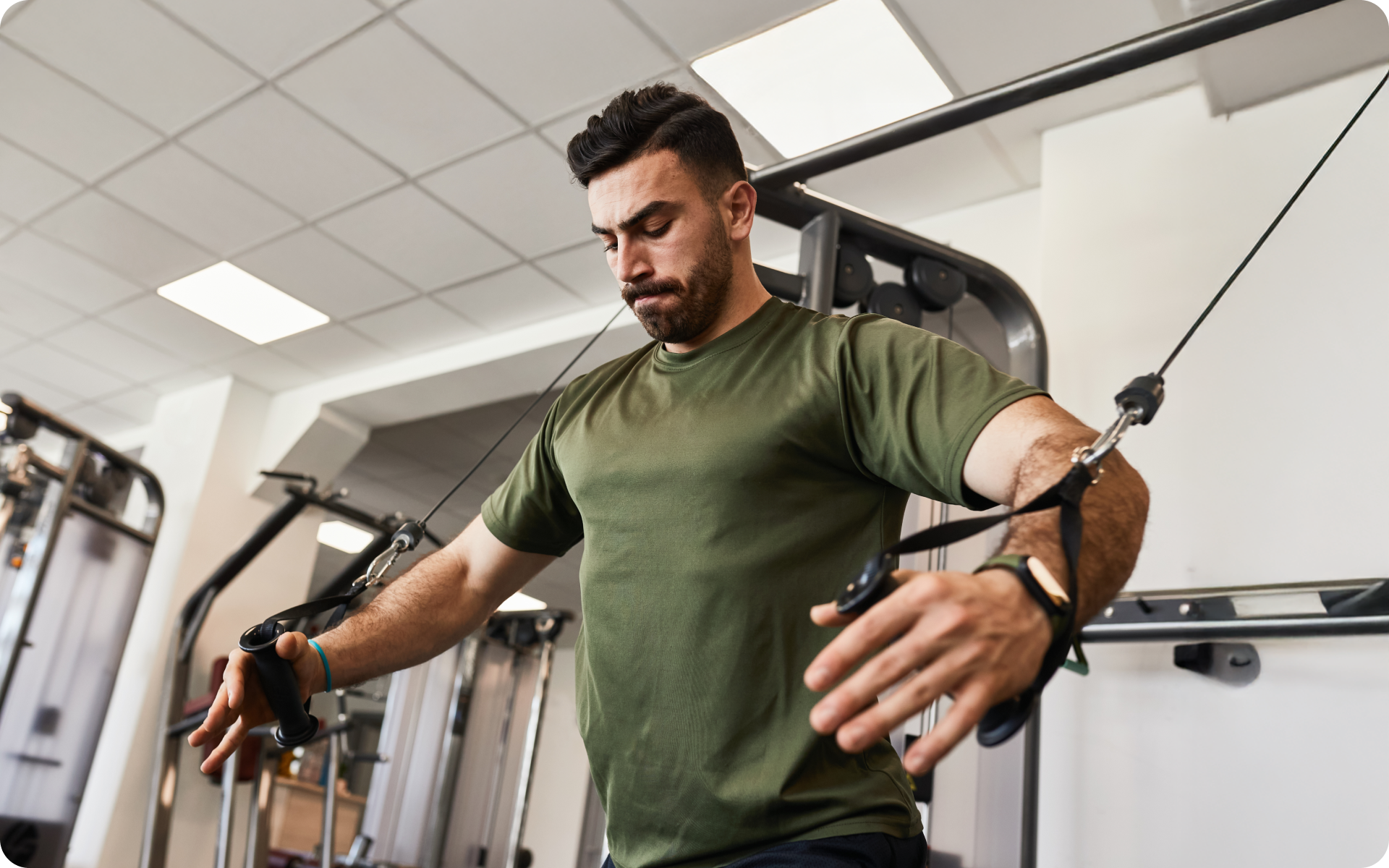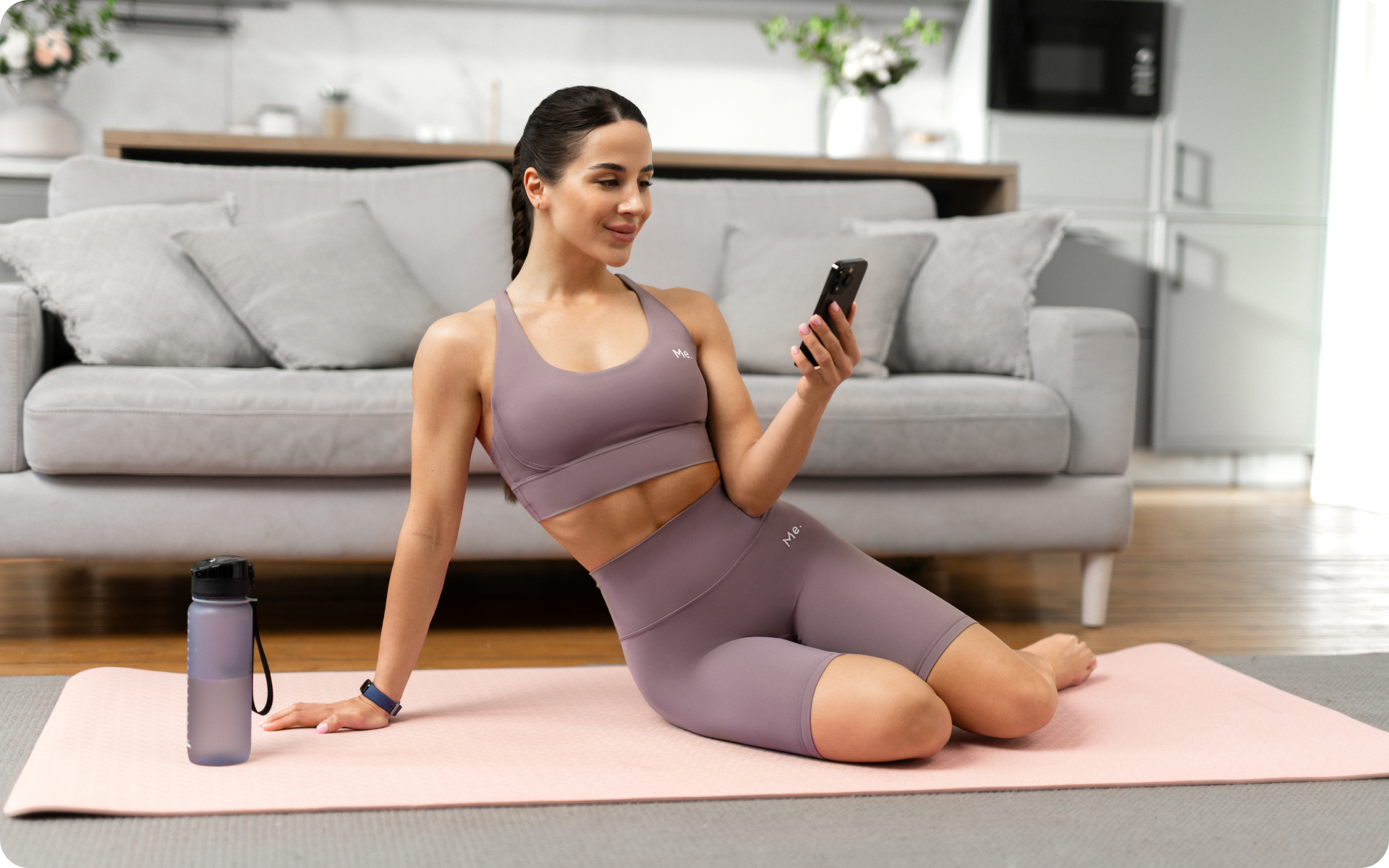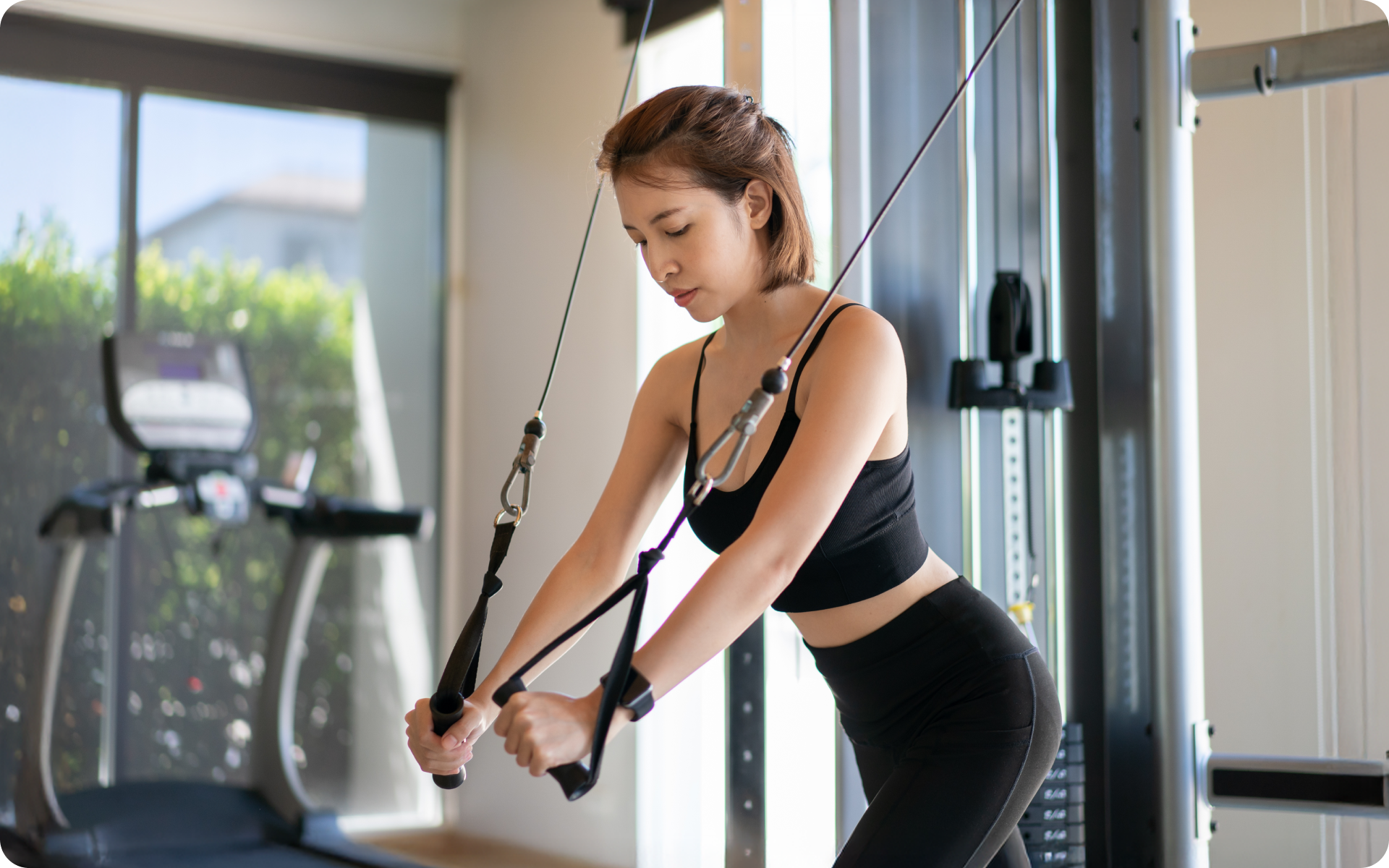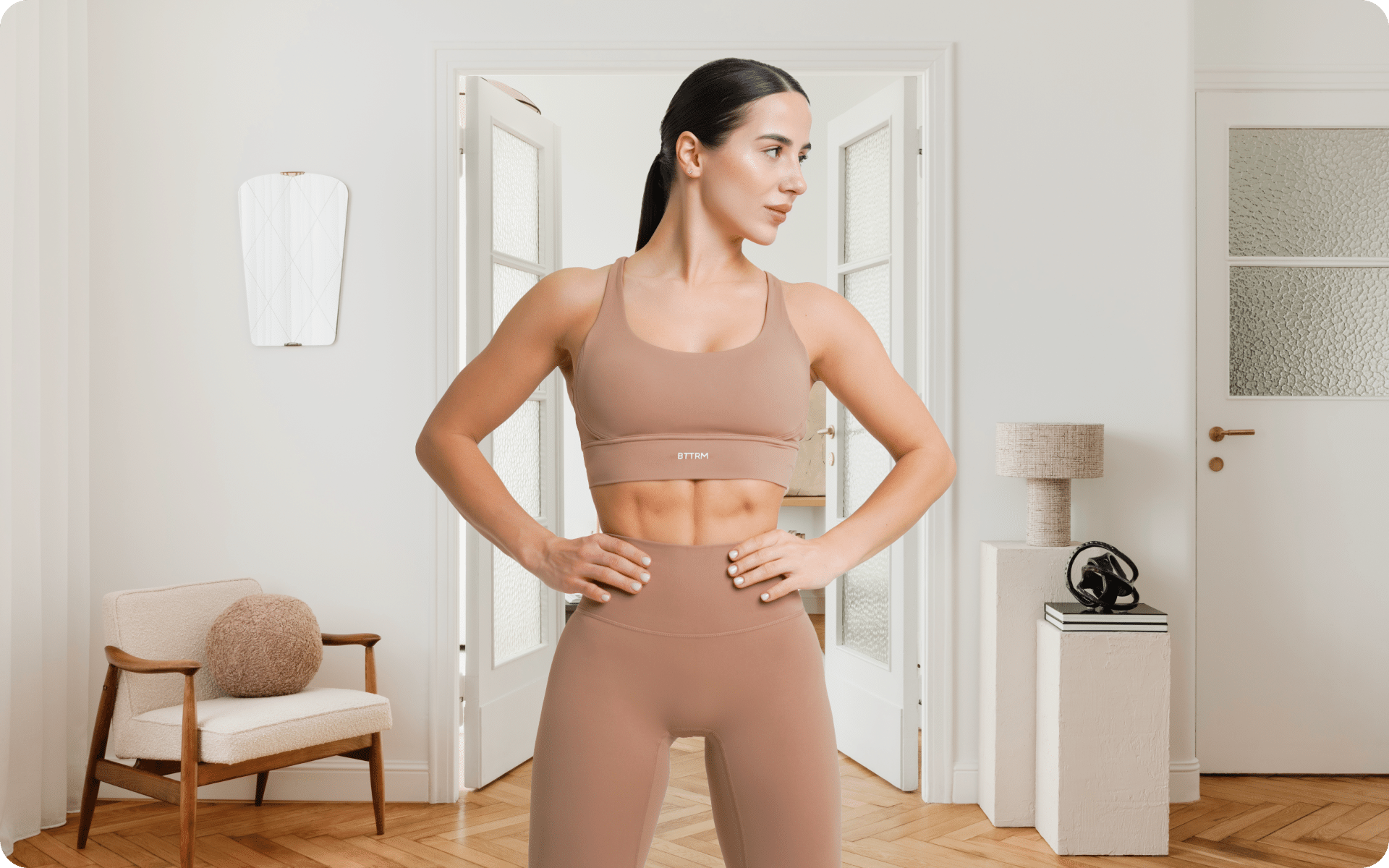The shoulder muscle is made up of 3 main muscles- the anterior (front) deltoid, the lateral (side) deltoid, and the posterior (rear) deltoid. The deltoids attach to the clavicle (collarbone) and scapula (shoulder blade) and insert into the humerus (upper arm bone) (1). All of these muscles work together to raise the arm. However, the lateral deltoid is responsible for raising the arm out to the side (hence its name). Lateral raises are a great exercise for targeting the lateral deltoid. This exercise can be done with dumbbells, resistance bands, or even just bodyweight. This article will discuss how lateral raises work, what muscles they target, and the benefits of this exercise. We’ll also provide a step-by-step guide on how to properly perform lateral raises.
Get your personalized
meal plan!
Do Lateral Raises Build Shoulders?
Lateral raises are one of the best isolation exercises for the shoulder; a complex and flexible joint that is responsible for a wide range of motion.
The deltoid muscle is the primary muscle worked during lateral raises. This large, triangular muscle covers the shoulder joint and is responsible for lifting the arm away from the body.
Lateral raises also work the trapezius, a large muscle extending from the base of the neck to the middle of the back. The trapezius helps to stabilize and move the shoulder blades.
The rotator cuff muscles are also worked during lateral raises. These small muscles surround the shoulder joint and help to keep the head of the humerus (upper arm bone) in place (6).
Here’s a quick step-by-step guide on how to perform lateral raises:
- Start by standing tall with your feet hip-width apart and your knees slightly bent.
- Hold a dumbbell in each hand at arm’s length by your sides, with your palms facing in toward your thighs.
- Without moving your lower body, raise your arms out to the sides until they’re parallel with the ground.
- Pause for a count of two, then slowly lower your arms back to the starting position.
- Repeat for the desired number of reps.
Read More: 4-Day Workout Routine For Beginners Looking To Grow Muscle
Mistakes To Avoid When Doing Lateral Raises
There are a few common mistakes people make when performing lateral raises. Avoid these errors to get the most out of this exercise:
Choosing A Heavy Weight
The most common mistake that even experienced lifters do is to choose the same weight they use for a dumbbell press or other overhead pressing movement.
But because lateral raises are a much more isolated movement, you should be using significantly less weight than you would for a pressing exercise.
While performing the dumbbell press, for example, you engage the bigger muscles of the chest, front deltoids, and triceps to help push the weight overhead. This means you’re able to take on a heavier load.
On the other hand, during lateral raises, these muscles aren’t used to the same extent. You’re relying on the comparatively smaller lateral deltoids to move the weight, so you should go lighter than you think.
If you can’t control the dumbbells and keep them level with each other throughout the entire range of motion, then the weight is too heavy. Go down in weight until you can maintain good form throughout the exercise.
You’re at a higher risk of injury if you use too much weight and your form starts to suffer.
Swinging The Dumbbells
Another common mistake people make is swinging the dumbbells up to the top position. This not only takes away from the effectiveness of the exercise but also puts you at risk of injuring your lower back.
When you swing the weights, you’re using momentum rather than muscle power to move them. This means you’re not effectively working the muscles you’re trying to target.
If you find yourself swinging the dumbbells, lower the weight and focus on using your lateral deltoids to lift the weight in a controlled manner.
The key is to use a slow and controlled motion throughout the entire range of motion. The dumbbells should never touch each other, and your arms should remain parallel to the ground at the top of the movement.
Lifting The Weights Too High
When you lift the weights too high, you take the focus off of the lateral deltoids and place it on the front deltoids and traps.
To avoid this, make sure to only raise your arms until they are parallel to the ground. Think of hinging at the elbows rather than moving your arms up and down.
BetterMe app will provide you with a host of fat-frying fitness routines that’ll scare the extra pounds away and turn your body into a masterpiece! Get your life moving in the right direction with BetterMe!
Dropping Your Head Forward
The correct form for lateral raises is keeping your head straight and chin up in the air. This activates the right muscles and helps you maintain good form.
If you drop your head forward and tuck your chin, you put unnecessary strain on your neck muscles. This can lead to pain and discomfort in the neck and shoulders.
Keep your focus on a spot in front of you to help keep your head in the correct position.
Lateral Raise Variations
Once you’ve mastered the basic lateral raise, there are a few variations you can try to keep your workouts interesting.
Seated Lateral Raise
The seated version of this exercise is a great way to reduce the risk of swinging the dumbbells and using momentum to lift the weight.
How to do it:
- Sit on the edge of a bench with your feet shoulder-width apart and a dumbbell in each hand.
- Rest your elbows on your knees and keep your palms facing each other.
- Keeping your head up and shoulders down, lift the dumbbells to the side until your arms are parallel to the ground.
- Slowly lower the weights back to the starting position.
Bent-Over Lateral Raise
The bent-over lateral raise has you performing the exercise with a slight forward lean. This increases the range of motion and works the muscles through a greater range.
How to do it:
- Stand with your feet shoulder-width apart and hold a dumbbell in each hand.
- Hinge forward at the hips and lower your torso until it’s parallel to the ground.
- Keeping your head up, raise the dumbbells to the side until your arms are parallel to the ground.
- Slowly lower the weights back to the starting position.
Scaption Raise
The scaption raise puts less stress on the shoulder joints than the traditional lateral raise.
How to do it:
- Stand with your feet shoulder-width apart and hold a dumbbell in each hand.
- Raise your arms out to the side and slightly forward until they’re at shoulder level. Your arms should be at a 30-degree angle from your body.
- Slowly lower the weights back to the starting position.
Partial Side Raise
If doing the full range of movement causes discomfort even with light weights, try doing a partial side raise.
How to do it:
- Stand with your feet shoulder-width apart and hold a dumbbell in each hand.
- Keeping your arms close to your sides, raise the dumbbells until they’re just below your nipple line. This is 50% of the full range of motion.
- Slowly lower the weights back to the starting position.
Read More: Ankle Mobility Exercises, Benefits, And FAQ: Improve Stability For Sports And Life
What Are Lateral Raises Good For?
Lateral raises are an excellent exercise for building strong, muscular shoulders. However, they also offer the following benefits:
Posture Improvement
Spending hours hunched over a computer can lead to rounded shoulders and poor posture (4). Lateral raises can help combat this by strengthening the muscles that hold your shoulders in the correct position.
Injury Prevention
Because the shoulders move in many ways and are involved in so many exercises, they’re susceptible to injury. Strengthening the muscles around the shoulder joint with exercises like lateral raises can help to prevent injuries.
Improved Joint Health
Lateral raises help to maintain healthy shoulder joints by strengthening the muscles and connective tissues that support them (2). This can help to reduce the risk of joint pain and other problems (7).
Improved Coordination
Lateral raises require coordination between the arms and the trunk. As you get stronger and more proficient at this exercise, your coordination will improve. This carries over to other exercises and activities that require coordination.
Improved Athletic Performance
Strong shoulders are important for many sports, such as swimming, tennis, and baseball. Lateral raises can help to improve athletic performance by strengthening the muscles needed for these activities.
Betterme will keep you laser-focused on your weight loss journey! Nutrient-packed meal plans, fat-blasting workouts, galvanizing challenges and much more. Try using the app and see for yourself!
Improve Body Composition
Lateral raises can help to improve your body composition by building muscle and burning fat. Muscle is more metabolically active than fat, so it helps to boost your metabolism and burn more calories even at rest (5).
Increase Energy
As part of a well-rounded fitness routine, lateral raises can help to increase energy levels. Frequent exercise helps to improve cardiovascular health and increase overall fitness, both of which can lead to more energy (3) (9).
Improve Mood
Exercise releases endorphins, which have mood-boosting effects (8). As part of a consistent workout routine, lateral raises can help to improve your mood and make you feel better overall.
The Bottom Line
Lateral raises are a great exercise for targeting the lateral deltoid and improving overall shoulder strength. This exercise can be done with dumbbells, resistance bands, or even just bodyweight. Give lateral raises a try and see how they can benefit your workout routine!
DISCLAIMER:
This article is intended for general informational purposes only and does not serve to address individual circumstances. It is not a substitute for professional advice or help and should not be relied on for making any kind of decision-making. Any action taken as a direct or indirect result of the information in this article is entirely at your own risk and is your sole responsibility.
BetterMe, its content staff, and its medical advisors accept no responsibility for inaccuracies, errors, misstatements, inconsistencies, or omissions and specifically disclaim any liability, loss or risk, personal, professional or otherwise, which may be incurred as a consequence, directly or indirectly, of the use and/or application of any content.
You should always seek the advice of your physician or other qualified health provider with any questions you may have regarding a medical condition or your specific situation. Never disregard professional medical advice or delay seeking it because of BetterMe content. If you suspect or think you may have a medical emergency, call your doctor.
SOURCES:
- Anatomy, Shoulder and Upper Limb, Deltoid Muscle (2022, ncbi.nlm.nih.gov)
- An Electromyographic Analysis of Lateral Raise Variations and Frontal Raise in Competitive Bodybuilders (2020, mdpi.com)
- Cardiovascular Effects and Benefits of Exercise (2018, frontiersin.org)
- Effect of Rounded and Hunched Shoulder Postures on Myotonometric Measurements of Upper Body Muscles in Sedentary Workers (2022, mdpi.com)
- Exercise, Abdominal Obesity, Skeletal Muscle, and Metabolic Risk: Evidence for a Dose Response (2012, onlinelibrary.wiley.com)
- Lateral Raise Exercise Guide: How to Master the Lateral Raise (2021, masterclass.com)
- Muscle Activation During Selected Strength Exercises in Women With Chronic Neck Muscle Pain (2008, academic.oup.com)
- Neuromodulation of Aerobic Exercise—A Review (2016, frontiersin.org)
- Physical activity and feelings of energy and fatigue: epidemiological evidence (2012, link.springer.com)
